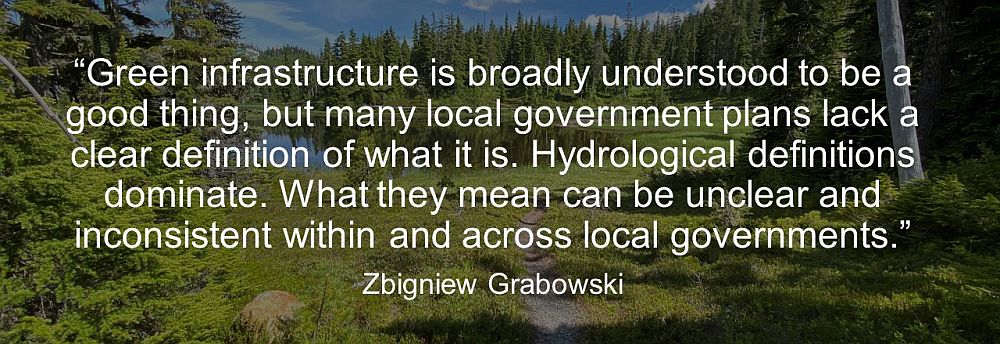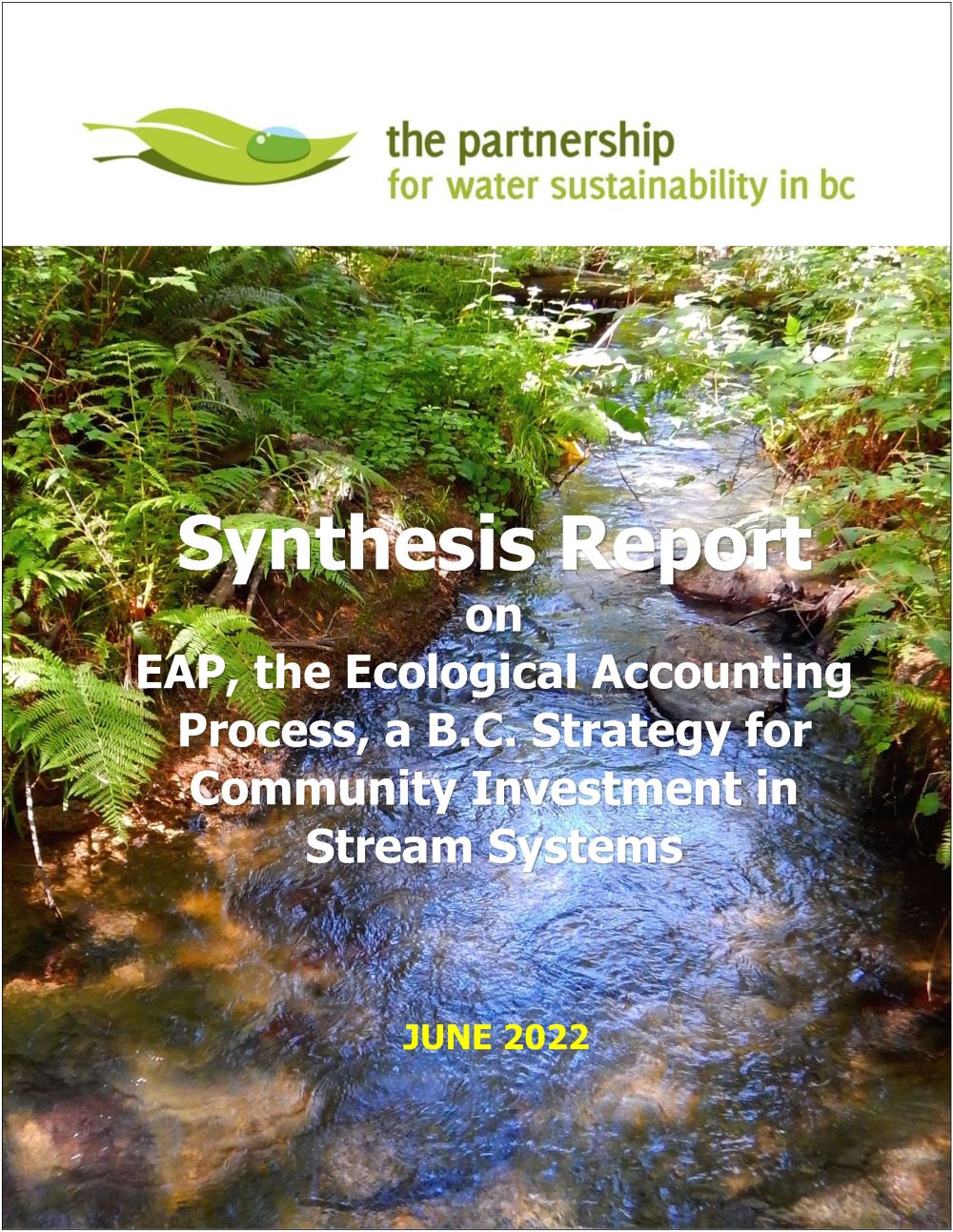BEYOND THE GUIDEBOOK 2022 / FINANCIAL CASE FOR STREAMS: “Green infrastructure state-of-the-art in the United States is now close to where the BC state-of-the-art was in 2005” – based on an interview with Dr. Zbigniew Grabowski, lead researcher for the Cary Institute of Ecosystem Studies, this is the key takeaway from the first systematic review of the use and definition of the green infrastructure concept in local government plans in the United States
Note to Reader:
In June 2022, the Partnership for Water Sustainability released the 4th in the Beyond the Guidebook Series. Titled Synthesis Report on the Ecological Accounting Process, a BC Strategy for Community Investment in Stream Systems, it showcases collaboration in action. EAP methodology and metrics allow local governments to make a convincing financial case for annual investment in stream systems to reduce the Riparian Deficit
DOWNLOAD A COPY OF Part E – A Stream is a Land Use. It provides the reader with an overview of how the financial value of the stream system is determined and how it can used in sustainable service delivery. Part E is structured in six sections:
- Story Behind the Story of the Ecological Pillar
- A Stream System is a Natural Commons
- Ecological Accounting Pillar Addresses the Riparian Deficit
- Central Ideas of the EAP Methodology
- Overview of the Research Framework
- Financial Case for the Stream: Key Findings
The “EAP story” is about a journey, one that began circa 1990 for pioneers working on parallel stream protection and restoration initiatives in British Columbia and Washington State. Three decades later, these parallel tracks have converged in the form of EAP. It has been a building blocks process requiring commitment, patience, and perseverance by many.

EAP and the Green Infrastructure Continuum
“In January 2022, the first systematic review of the use and definition of the green infrastructure concept in local government plans in the United States captured attention with this headline: Cities are murky on how they define ‘green infrastructure’,” reported Kim Stephens, Partnership Executive Director.
“Analysis of 122 plans from 20 major cities by Dr. Zbigniew Grabowski of the Cary Institute found that many plans fail to explicitly define green infrastructure. When they do, they tend to focus on stormwater management. A conversation with Dr. Z allowed the Partnership to compare US and BC experience and connect dots.”

Design with Nature
“The key takeaway from Dr. Z is that the green infrastructure state-of-the-art in the United States is now close to where BC was in 2005 when the Partnership developed a ‘Design With Nature’ framework for a whole-system approach that integrates across infrastructure systems,” observed Kim Stephens.
“In 2005, we framed this ‘made in BC’ approach to community development in terms of six objectives. These embrace yet at the same time transcend engineered infrastructure to provide a comprehensive view. It is a system lens.”
“In the meantime, the Partnership work has continued to progress along the green infrastructure continuum as we evolve the systems approach. EAP is the latest evolution and may be the gold standard.”
To Learn More:

Look at Green Infrastructure through a Social Lens
A second takeaway from the research by Dr. Z is the perspective he provides on applying an integrated systems approach to green infrastructure. “There are a lot of ‘greening’ and sustainability initiatives, but they are not conceptually unified. They are neither thought about in terms of interdependencies nor systemically,” he said.
“We had this moment of realization about the diversity of plans when it clicked in our minds about analyzing all the plans in terms of three big buckets: something that is very stormwater-focused, something that is very land-focused, and something that is trying to integrate the two.”
Re-imagining green infrastructure as an integrated system
“In the process, we started to uncover this grain of systems thinking within green infrastructure planning. It is like a crystal within a larger chaotic mix of planning ideas, an idea allowing us to integrate many different infrastructure systems. Maybe, if we just crystalize that nugget of an idea even more, it will catalyze a more structured way of thinking about these things in US urban planning and beyond,” concluded Dr. Z.
“His revelation describes the essence of EAP and what the Partnership is striving to accomplish by advancing this foundational concept: Drainage infrastructure and the stream system together provide the municipal Drainage Service,” summarized Kim Stephens.

To Learn More:
To read the complete Synthesis Report, download a copy of Ecological Accounting Process, A B.C. Strategy for Community Investment in Stream Systems (2022) .
The “story of EAP” is told in six parts. To download them individually, click on the links:
Financial Case for the Stream – Executive Summary
Part A – Synopsis for the Busy Reader
Part B – Story Behind the Story of Sustainable Drainage Service Delivery
Part C – Case Study Building Blocks Process
Part D – Hydrology is the Engine that Powers Ecological Services
Part E – A Stream is a Land Use

DOWNLOAD A COPY OF https://waterbucket.ca/gi/wp-content/uploads/sites/4/2022/06/EAP-Synthesis-Report-Beyond-the-Guidebook-2022_Jun-2022.pdf

